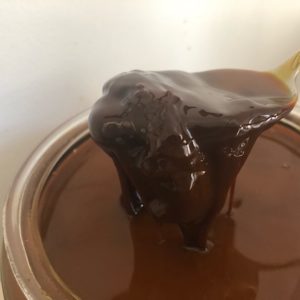Should shellac flakes dissolve in alcohol completely?
I’m getting different answers depending on who I talk with. I was mixing a two pound cut of my own shellac I sourced from Liberon Garnett and Lemon. Anyways I let it sit for a week in 190 proof alcohol. I stirred the mix periodically. Come back a week later, and the shellac settled to the bottom and turned into a goop. A few have told me this is normal and can be strained with a coffee or paint screen. Others have told me that this is indication that the shellac has gone bad. I stored the shellac for about a year before using it in a cool, dark, and dry basement. The flakes were purchased on eBay so I couldn’t say how old they are. My basic question would be, should shellac flakes dissolve completely and if not, is that an indication they are bad? This is NOT dewaxed. I could try it on a test piece beforehand.
















Replies
IMO, yes they should dissolve completely. If you strain with matter remaining it will change your cut. Not a big deal, it will just be less shellac on the piece and may require more coats. Replication would be more of an issue as you would not know what the actual cut is. Could be the flakes, could be the alcohol. I’d keep stirring regularly and see how they dissolve. It might take some time but I’d stir every hour or so.
Also @Oxmach I assume if I test it on a wood board and it dries sticky, then that would be a sign its past expiration.
Just tested. I can confirm that it's NOT sticky to the touch after testing it on a pine board. You're right though, it would be more watered down.
Doesn't look half bad. A 2 pound cut was already thick as it is. It's not sticky and dried nicely and this was the lemon on my test piece. Not sure I want to toss this away just yet. I'm looking to french polish with this if that makes any difference. Yes I would have loved all of it to dissolve, but it doesn't actually look that bad with just one coat.
Don't just test with your fingers. Once it dries, run some fine sandpaper over the test piece. If the finish powders, it's ok. If not, it didn't fully cure.
Shellac can feel dry. But put it on a tabletop, and put a lamp or whatnot on it, and the weight over time can glue the object down. You'll have to smack things to get them off.
Shellac settles if left still for a period of time. Even Zinsser products get stirred throughout the finishing process for me. Similar to stirring in flattening agents in semi-gloss finishes, if you don't keep things stirred you get irregular results.
Shelf life is limited on a lot of shellac products. I think a year is too long for nearly any product other than Zinsser premixed. The extended shelf life is one of the features that got them the market share.
I would not strain shellac unless I got something foreign in the mix; sticks and twigs, spiders, etc. Shellac dries hella-fast. Prep a board, lay some on and see what you get.
Shellac is probably bad. Try applying to a piece of scrap and sanding as JohnC2 suggested. I would probably just get new flakes from a reputable supplier before I applied to a project that I'd spent time building.
I can report I took 400-500 grit sandpaper. Dust formed and didn't bunch up. Not sticky after sitting on a table. Looks okay but probably watered down. I will report what happens when I paint it on my project next week.
Yes. They should dissolve completely. I grind the flakes in a coffee grinder before adding them to the alcohol. This should take care of some of the problem. Dewaxed is also generally a better choice , for future reference. Stir it up every hour and keep it in a relatively warm place while it dissolves.
https://youtu.be/8iFRYGWD4SQ
Apologies for being late to the party - I found this thread trying to figure out the exact same issue (which I haven't encountered before despite having mixed my own shellac many, many times before). The flakes turned to goo and just stayed that way for a full 6 days. I know for a fact it dissolved entirely inside 48 hours last time I used it.
Being the stubborn sort, I decided to experiment a bit. Took the jar, lid on, stuck it in an ultrasonic cleaner and ran it (unheated). Everything dissolved in two hours.
I agree with the use of a coffee grinder. This helps a lot with both time and completeness of dissolving. I still strain it through a paint filter to remove a small amount of debris, but doing it this way, I have been able to use it within a few hours.
This forum post is now archived. Commenting has been disabled